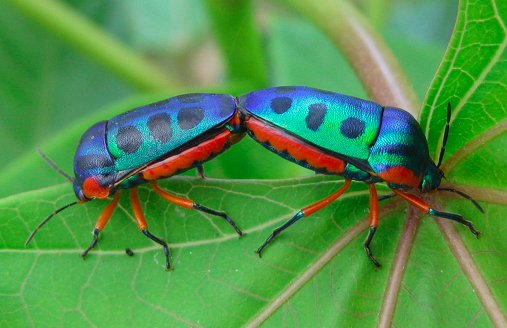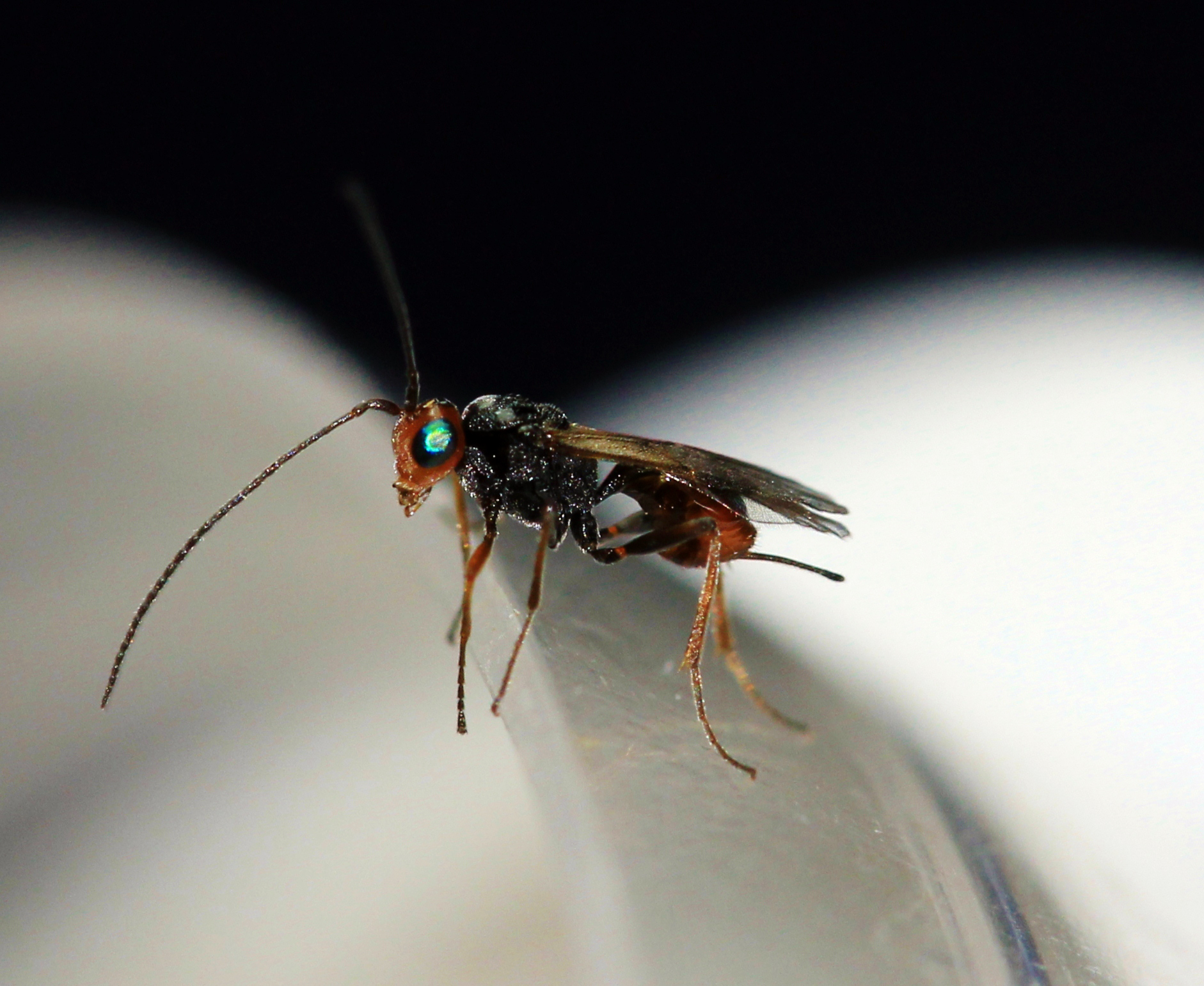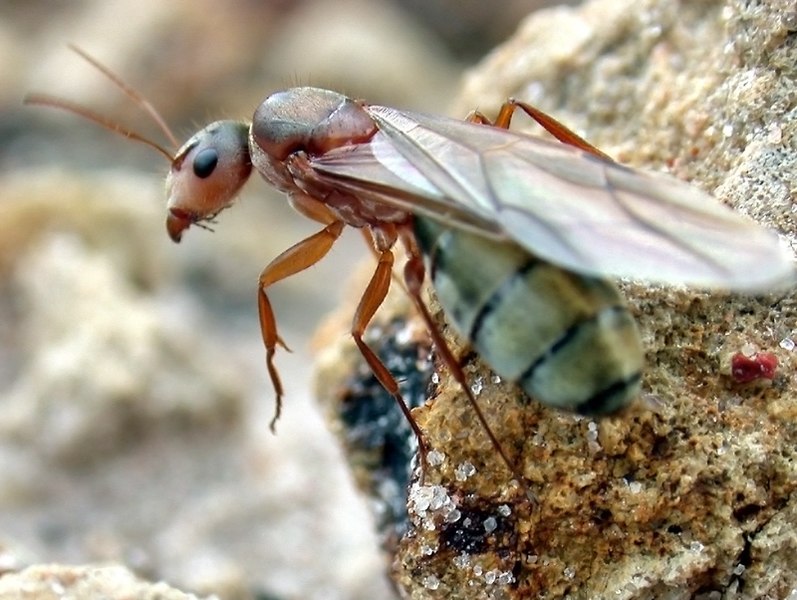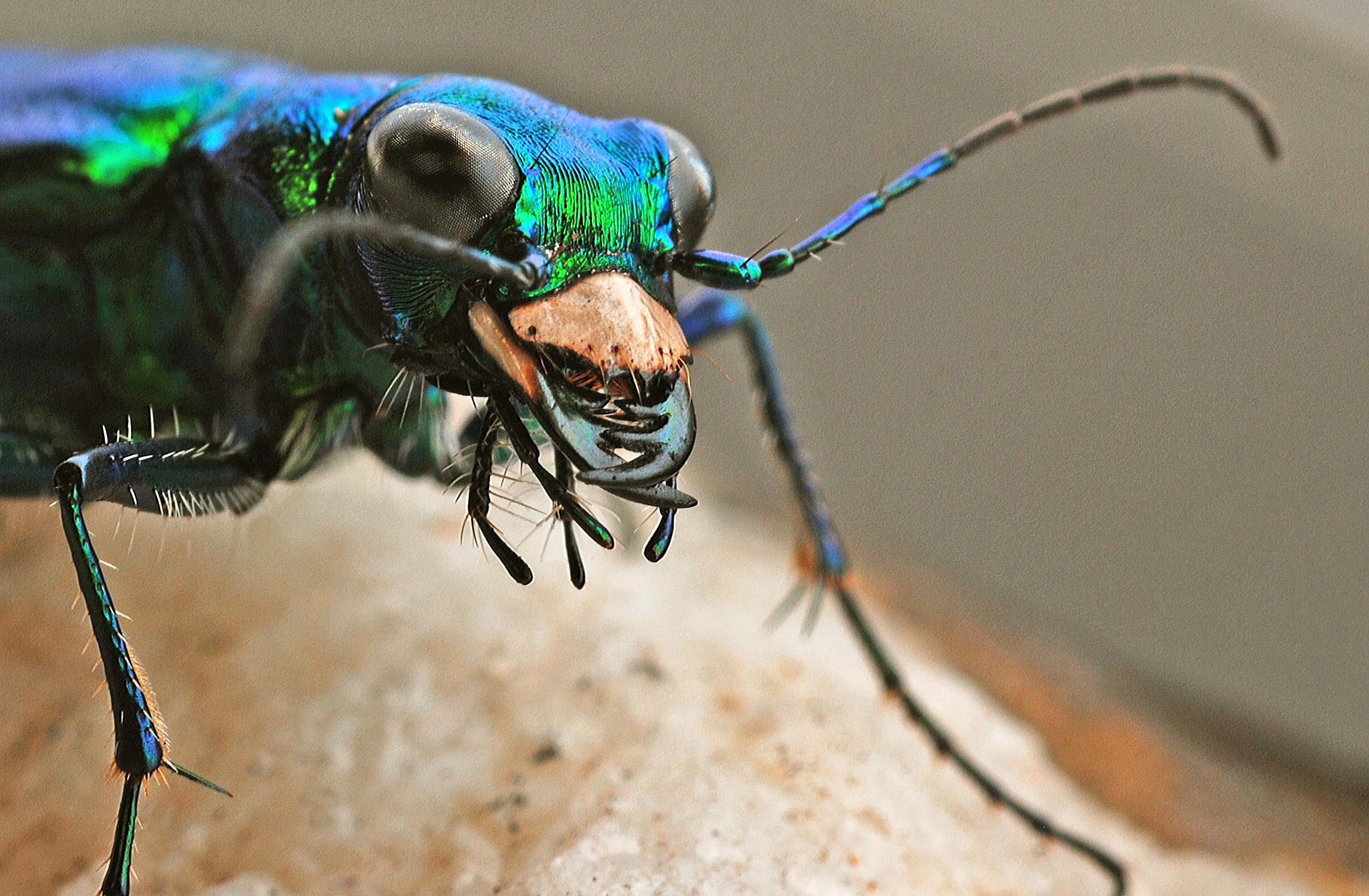Check out some insects with St. Patrick’s Day colors!
Green to Gold: Desert Locusts
Desert locusts, Schistocerca emarginata and Schistocera gregaria, exhibit an interesting defense strategy: the ability to turn green. Researchers think that this color change is a form of predator avoidance. Some populations of the species consume a poisonous plant that makes the bugs toxic to its reptilian predators. When populations are high, predators are more likely to learn the locus is toxic. Consequentially, the bugs turn bright golden yellow with black spots to warn and ward off hungry lizards in a phenomenon known as aposematism. However, when populations are low, the locust has a better chance of surviving if it is colored to match its natural leafy habitat. This ability to change color according to population density is a form of phenotypic plasticity. In general, phenotypic plasticity is the ability to produce multiple phenotypes from one genotype. This term may sound familiar because it also applies to wing development in our lab’s soapberry bugs!
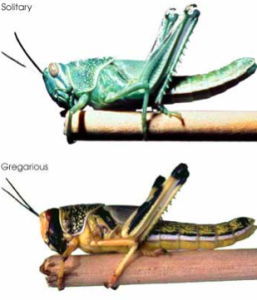
Schistocera gregaria (Image: public domain)
The Golden Tortoise Beetle
Upon first glance you might think that somebody dropped a gold coin on the ground. The Golden Tortoise Beetle may not have 24 karats; however, it surely compensates in looks. A delicate gold shell surrounds the head and abdomen, adorned by small iridescent dots. This member of the order Coleoptera may appear about as glamorous as it gets, feasting on a diet of morning glory and sweet potato foliage. However, these beetles are fool’s gold when it comes to being classy. To hide from predators, larvae cover themselves in a fecal shield… as in, a shield made of feces. Gross!
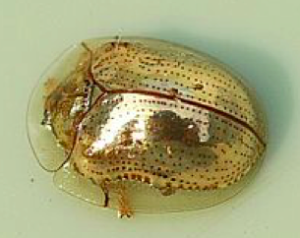
Charidotella sexpunctata (Image: public domain)
Rainbow Bonus!
The rainbow shield bug is magnificent in color and true to its name. Cool, swirled tones of blue and green color fade into red, yellow, and orange hues. These critters tend to live in semi-arid climates and can be found throughout Africa.
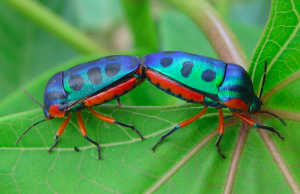
(Image: public domain)
Green to Gold, the Desert Locust: Sword, G. A. 1999. Density-dependent warning coloration. Nature 397:217. Available from http://dx.doi.org/10.1038/16609.

